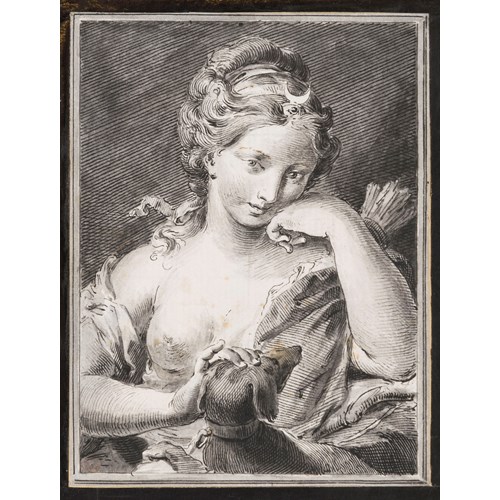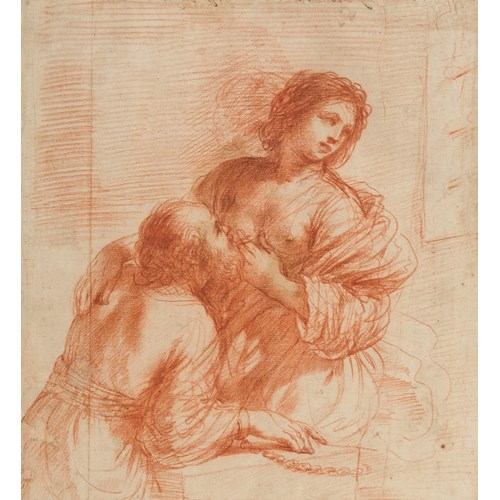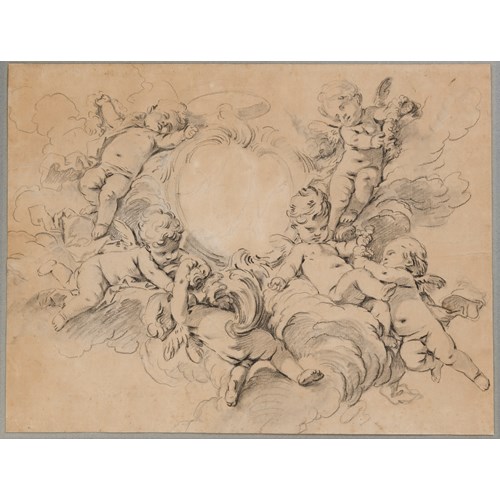Marketplace
Old Town Market Place, Warsaw
In February 1968 Domenico Gnoli and his wife Yannick Vu travelled to several countries in Eastern Europe, visiting Prague, Warsaw, Moscow and Leningrad, on a commission to produce drawings for Holiday magazine. Warsaw was not actually meant to be on the itinerary, as the artist noted in a letter to Ted Riley: ‘So here we are en route…Very excited indeed and ready for action…I know I was not supposed to go to Warsaw and Leningrad but I find it so silly given the fact that W. is on our route and the other only one and half hours from Moscow ($18 the air fare) that I just decided to go. If Holiday is not interested I’ll pay for it myself.’ Gnoli and Vu spent two days in Warsaw, staying at the Hotel Europejski, and during their walks around the reconstructed postwar city the artist was particularly impressed by how the buildings of the old city had been carefully reconstructed following the destruction of the Second World War.
As the artist noted, in a sort of travel diary written in early March, soon after his return to Rome: ‘The street[s] of Warsaw unbelievably white, swept by the wind, almost without traffic. The squares are as vast as airfields with the snow piled in great drifts along the sides, almost nobody around. Under these squares lie the remains of what had been densely populated areas of the city, also the memory of one million dead...walking further towards the old market and then through what used to be the ghetto and the ancient quarters, thousand[s] of squares, of churches, carefully rebuilt, of sculptures and ornaments dug from under the ruins and replaced where they were, the old colors remembered and now bright again, little by little we begin to understand that this incredible restoration of the past is even more significant than the monuments to the glory of those who perished. The whole city has been rebuilt stone by stone, house by house. Whenever something could be utilized it has been returned to its former place and the wounds from the blows received cured one by one; with patience and infinite labor. But more moving than the labor is the evident, meticulous effort of memory through which everything has been rebuilt. It is impossible to think that more than a few plans of the old buildings were still available: no, these houses have been rebuilt only through the memory of those who survived that remembered miraculously every detail, every shape, every shade of color. More than the tears, memory pays an homage to the past; a city amorously able to retain the image of itself…We’ve been walking for hours and we feel as if we’ve been visiting a double city, that is, a city that is the image of itself besides being itself. Like an echo that twenty years later returns to be the voice that once provoked it.’
The present sheet was one of five drawings of Warsaw by Gnoli used to illustrate an article by Edith Templeton entitled ‘Warsaw and Peace’, published in Holiday magazine in September 1968. This overhead view of the Old Town Market Place in Warsaw (‘Rynek Starego Miasta’ in Polish) was used as a double-page spread illustration in the magazine, accompanied by the caption: ‘The Old Town Market, one of the finest squares in Europe, has been rebuilt from the ground up since World War II, when 85 percent of the buildings in Warsaw were destroyed.’
The first owner of the present sheet was the magazine editor and art director Frank Zachary (1914-2015), who served as both picture editor and art director of Holiday magazine between 1951 and 1964.
As the artist noted, in a sort of travel diary written in early March, soon after his return to Rome: ‘The street[s] of Warsaw unbelievably white, swept by the wind, almost without traffic. The squares are as vast as airfields with the snow piled in great drifts along the sides, almost nobody around. Under these squares lie the remains of what had been densely populated areas of the city, also the memory of one million dead...walking further towards the old market and then through what used to be the ghetto and the ancient quarters, thousand[s] of squares, of churches, carefully rebuilt, of sculptures and ornaments dug from under the ruins and replaced where they were, the old colors remembered and now bright again, little by little we begin to understand that this incredible restoration of the past is even more significant than the monuments to the glory of those who perished. The whole city has been rebuilt stone by stone, house by house. Whenever something could be utilized it has been returned to its former place and the wounds from the blows received cured one by one; with patience and infinite labor. But more moving than the labor is the evident, meticulous effort of memory through which everything has been rebuilt. It is impossible to think that more than a few plans of the old buildings were still available: no, these houses have been rebuilt only through the memory of those who survived that remembered miraculously every detail, every shape, every shade of color. More than the tears, memory pays an homage to the past; a city amorously able to retain the image of itself…We’ve been walking for hours and we feel as if we’ve been visiting a double city, that is, a city that is the image of itself besides being itself. Like an echo that twenty years later returns to be the voice that once provoked it.’
The present sheet was one of five drawings of Warsaw by Gnoli used to illustrate an article by Edith Templeton entitled ‘Warsaw and Peace’, published in Holiday magazine in September 1968. This overhead view of the Old Town Market Place in Warsaw (‘Rynek Starego Miasta’ in Polish) was used as a double-page spread illustration in the magazine, accompanied by the caption: ‘The Old Town Market, one of the finest squares in Europe, has been rebuilt from the ground up since World War II, when 85 percent of the buildings in Warsaw were destroyed.’
The first owner of the present sheet was the magazine editor and art director Frank Zachary (1914-2015), who served as both picture editor and art director of Holiday magazine between 1951 and 1964.
Provenance: Frank Zachary, East Hampton, New York
Thence by family descent.
Literature: Edith Templeton and Domenico Gnoli, ‘Warsaw and Peace’, Holiday, September 1968, illustrated pp.50-51; Vittorio Sgarbi, ‘Nel mondo fantastico di Domenico Gnoli’, in Vittorio Sgarbi, L’opera grafica di Domenico Gnoli, Milan, 1985, p.23; Annie de Garrou Gnoli, ‘Catalogo ragionato’, in Sgarbi, ibid., p.160 (as location unknown, not illustrated); Carlo Barbatti and Giulia Lotti, ‘1933-70’. A Life in Pictures and Documents’, in Germano Celant et al, Domenico Gnoli, exhibition catalogue, Milan, 2021-2022, p.299, fig.898.
More artworks from the Gallery


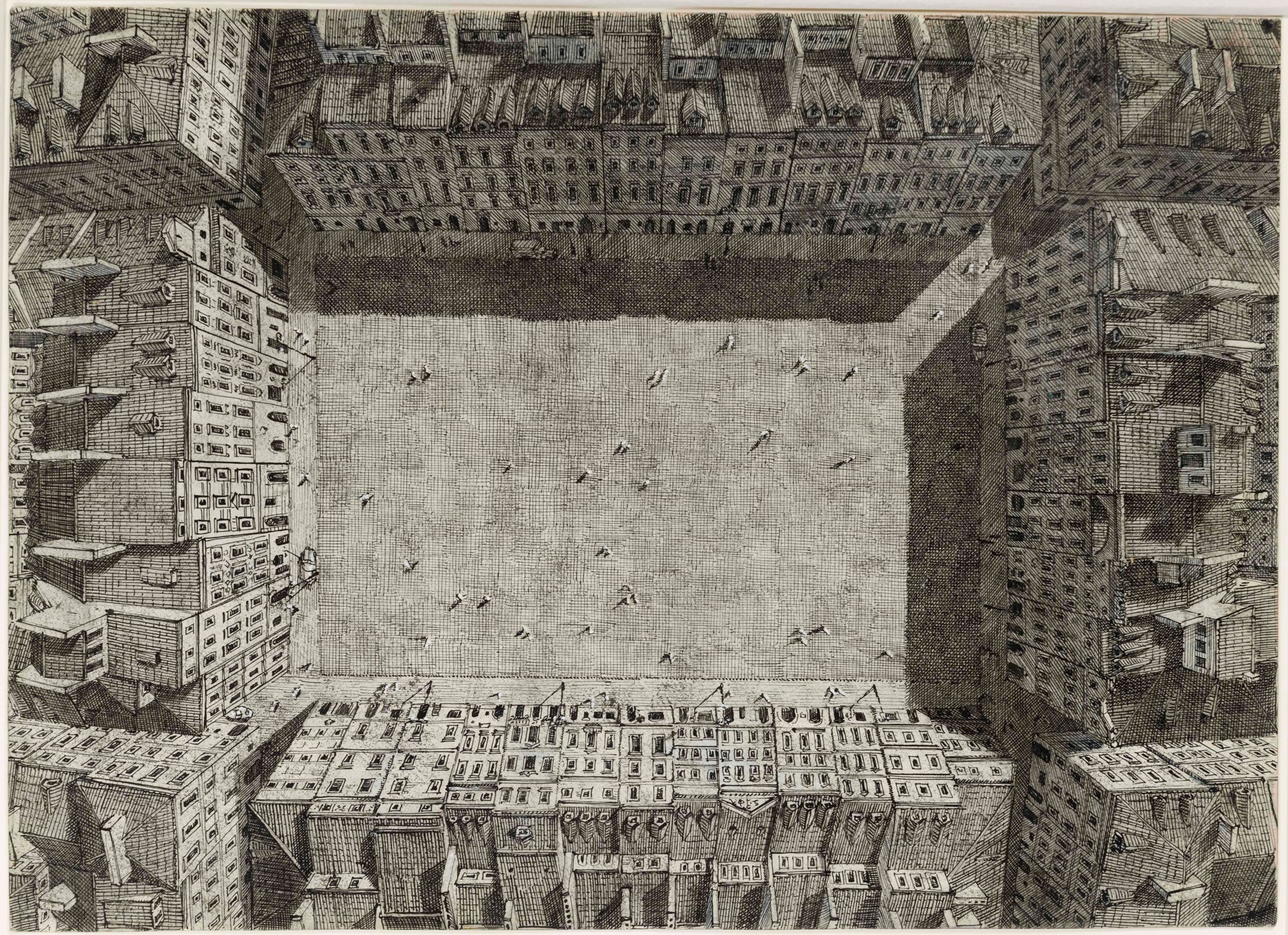


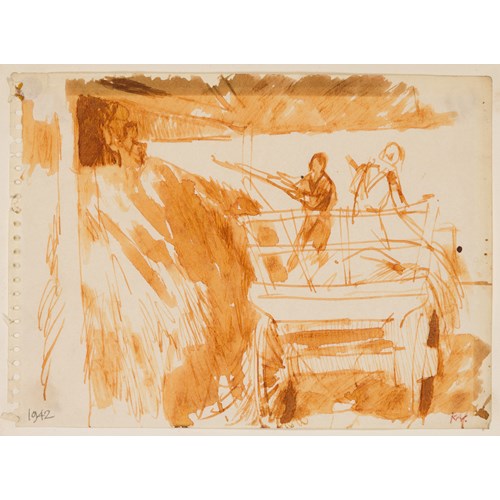
, 1994_T638389503811675926.jpg?width=500&height=500&mode=pad&scale=both&qlt=90&format=jpg)
